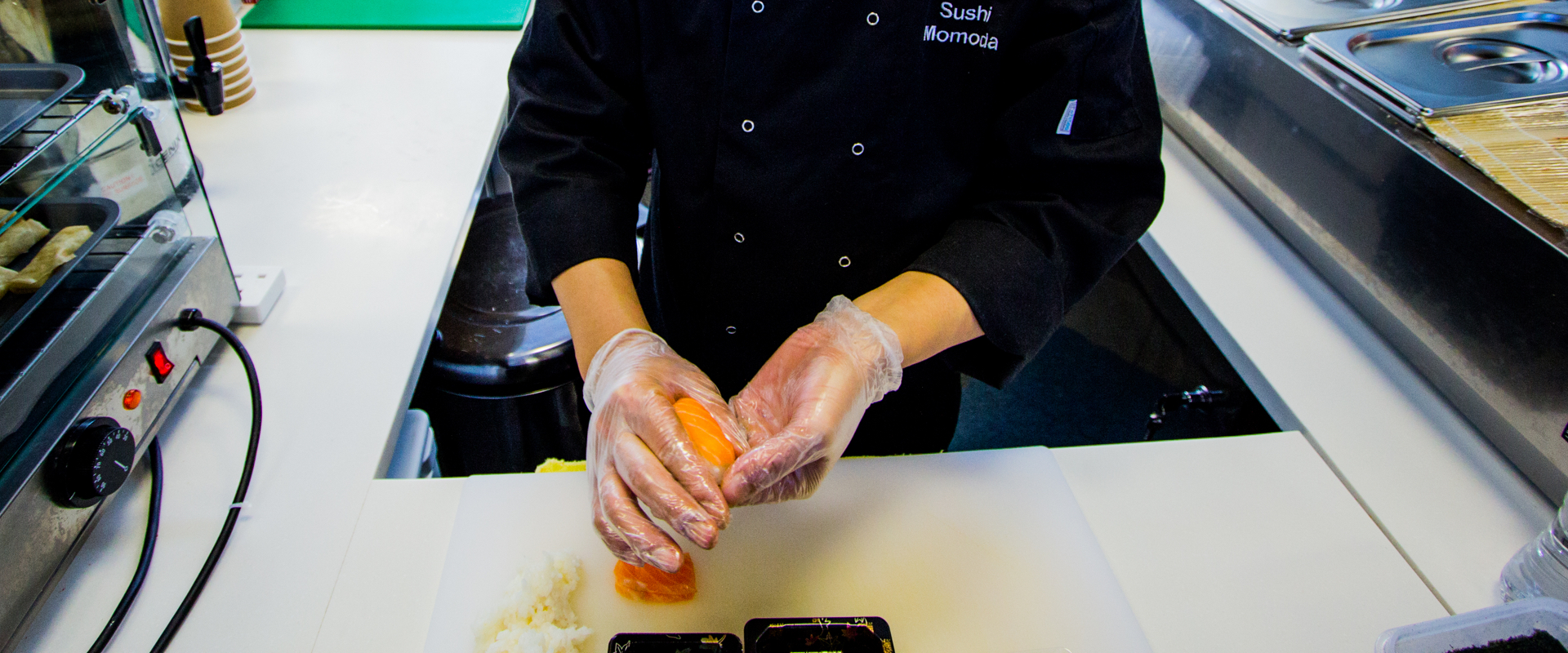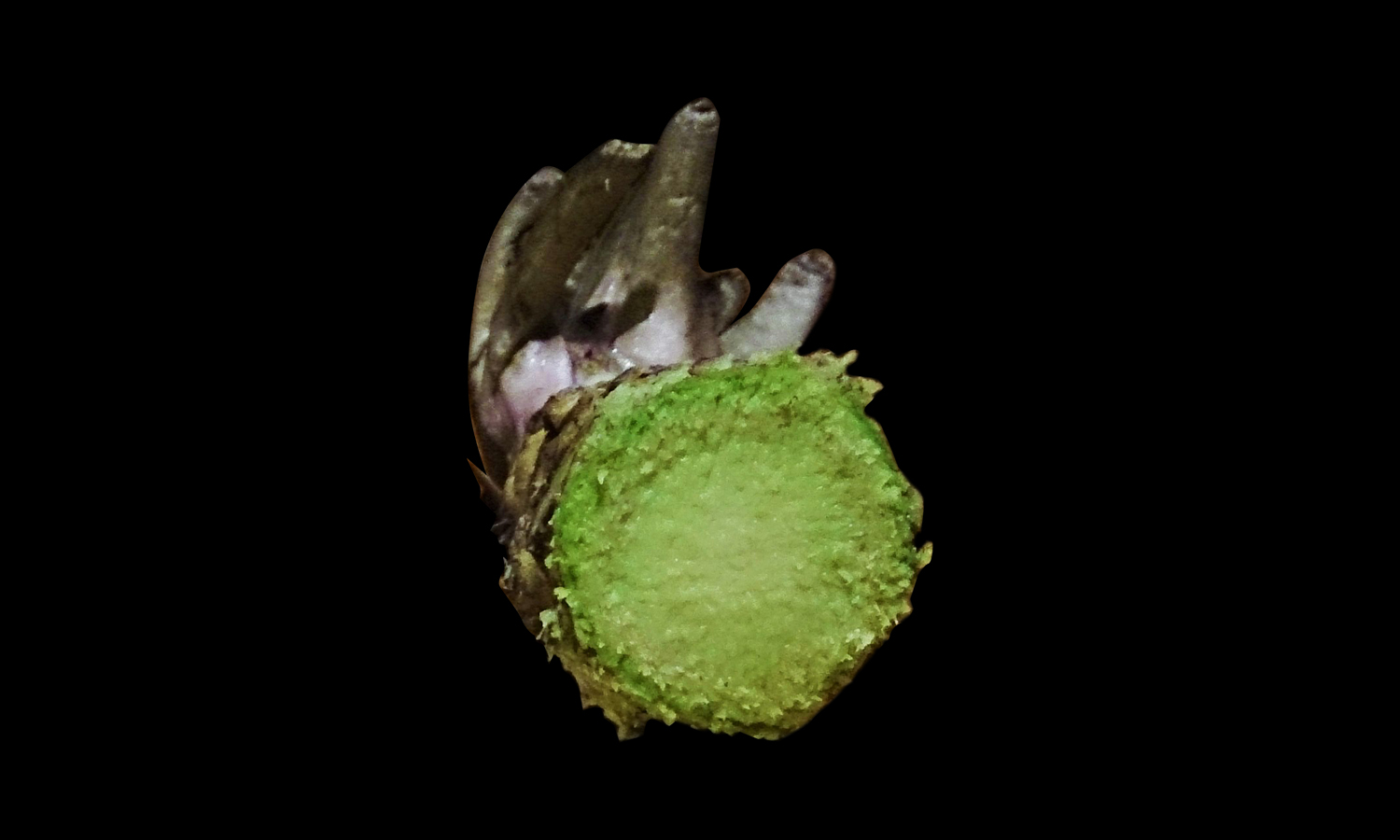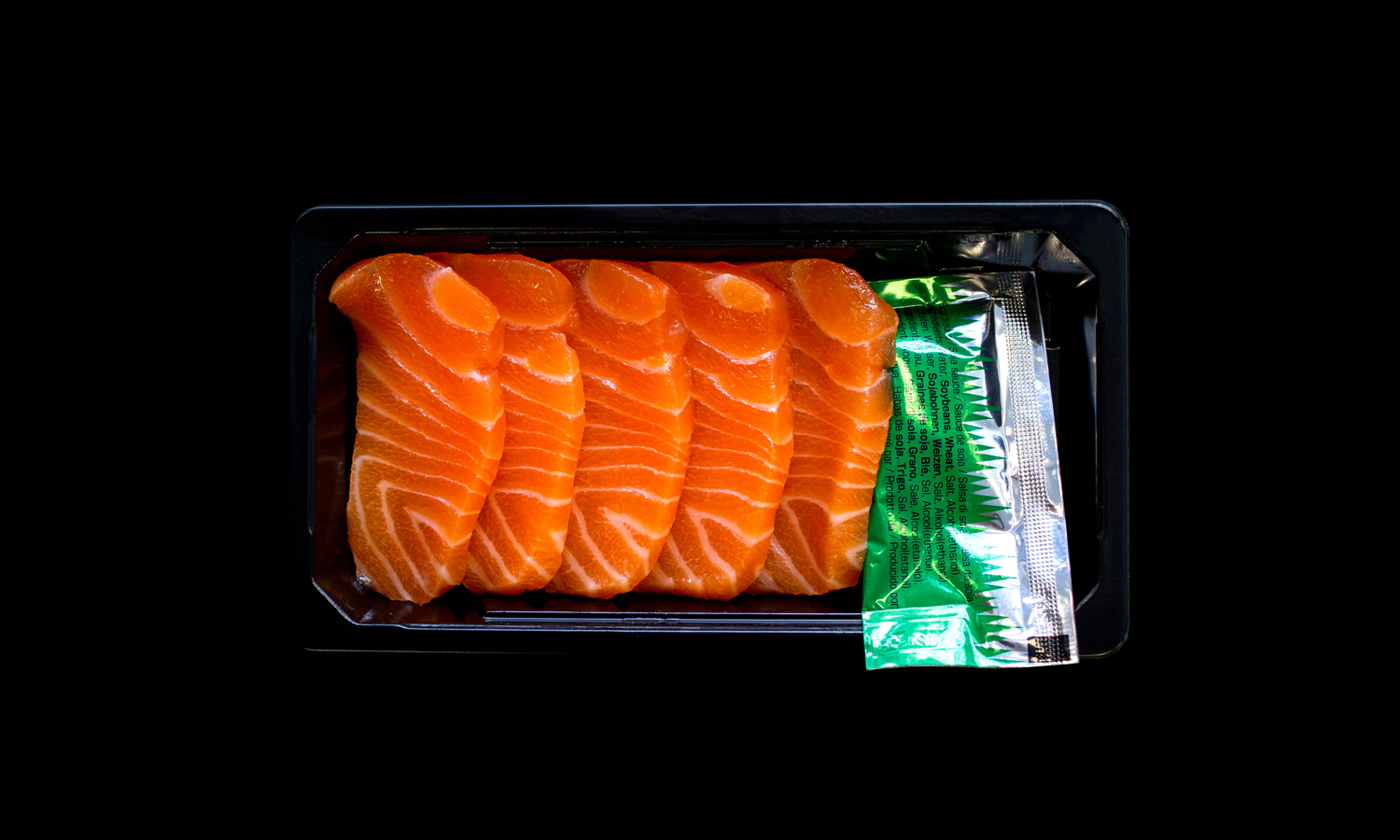
SUSHI GUIDE
Welcome to the Sushi Guide, here at Sushi Momoda we realise that many of our customers may not know the differences between the names of Japanese sushi, for example what a “futomaki” is or a “maki” for instance. We wanted to create a page dedicated to break down the main sushi names, you would normally hear or see when dealing with Japanese cuisine. We hope this can make it easier for you to distinguish the difference between Japanese sushi and to be able to share your knowledge to other potential sushi lovers out there. We would love to hear any thoughts or feedback you have that may help others to remembering the differences.
Maki
Maki is an traditional sushi roll cut from a roll of rice with various ingredients wrapped in seaweed. These tend to be small sushi’s with one ingredient of salmon, tuna, cucumber or avocado. Have a look at our options for more of a visual reference – the maki salmon roll, maki cucumber roll or maki avocado rolls.
Maki
Maki is an traditional sushi roll cut from a roll of rice with various ingredients wrapped in seaweed. These tend to be small sushi’s with one ingredient of salmon, tuna, cucumber or avocado. Have a look at our options for more of a visual reference – the maki salmon roll, maki cucumber roll or maki avocado rolls.
Uramaki
The Uramaki is literally an inside-out-roll that refers to having rice on the outside with seaweed in the inside wrapped around different fillings. Typically you would see Uramaki roll coated with toasted sesame seeds with fillings of avocado and salmon. A good way we try to remember what the Uramaki is, is to break the word up – “Ura-Maki”. Maki remembering it has nori (specially made seaweed on the outside) and assiociating the word “Ura” as under and behind the rice.
Uramaki
The Uramaki is literally an inside-out-roll that refers to having rice on the outside with seaweed in the inside wrapped around different fillings. Typically you would see Uramaki roll coated with toasted sesame seeds with fillings of avocado and salmon. A good way we try to remember what the Uramaki is, is to break the word up – “Ura-Maki”. Maki remembering it has nori (specially made seaweed on the outside) and assiociating the word “Ura” as under and behind the rice.
Nigiri
Nigiri normally contains raw or cooked seafood grilled slightly over and is also slightly raw and placed on top of rice. Nigiri means “two fingers” referring to the size of the portion. For those wanting to try or see what is nigiri, have a look at the eel nigiri we have.
Nigiri
Nigiri normally contains raw or cooked seafood grilled slightly over and is also slightly raw and placed on top of rice. Nigiri means “two fingers” referring to the size of the portion. For those wanting to try or see what is nigiri, have a look at the eel nigiri we have.
Temaki
Temaki sushi means hand roll. It’s typically cone shaped made with nori (specially made seaweed) with a variety of fillings. Temakis are normally 10cm long and made to eat quick as the nori seaweed cone absorbs moisture from the filling and become soft, losing it’s crispiness.
Temaki
Temaki sushi means hand roll. It’s typically cone shaped made with nori (specially made seaweed) with a variety of fillings. Temakis are normally 10cm long and made to eat quick as the nori seaweed cone absorbs moisture from the filling and become soft, losing it’s crispiness.
Futomaki
These rolls are larger, thicker than your average sushi rolls. These are normally wrapped with nori (specially made seaweed). The futomaki roll consists of different variety of fillings just like any other roll however it is roughly made 2 —2.5 inches in diameter. We find it easy to remember by using the first part of the name “Fu” and associate the F with fat referring that it’s a thicker and larger roll than normal.
Wasabi
Mixing wasabi or having it raw is a great way to eat your sushi or sashimi. A thick green root which taste like horseradish. Wasabi helps draw out more flavour of sushi and is effective in suppressing microbes and bacteria that can cause food poisoning. Mixing in a little wasabi with soy sauce is great with all sushi’s and we recommend to have it for these cases.


Wasabi
Mixing wasabi or having it raw is a great way to eat your sushi or sashimi. A thick green root which taste like horseradish. Wasabi helps draw out more flavour of sushi and is effective in suppressing microbes and bacteria that can cause food poisoning. Mixing in a little wasabi with soy sauce is great with all sushi’s and we recommend to have it for these cases.
Wakame
Wakame is an edible green sea vegetable, with a subtle sweet flavour and often used in miso soups. There are loads of health benefits eating wakame, for example the small seaweed is packed with nutrients like magnesium, iodine, calcium, iron, vitamins A,C, E & K and many others! Try our wakame salad if you haven’t done so already on your next visit.
Wakame
Wakame is an edible green sea vegetable, with a subtle sweet flavour and often used in miso soups. There are loads of health benefits eating wakame, for example the small seaweed is packed with nutrients like magnesium, iodine, calcium, iron, vitamins A,C, E & K and many others! Try our wakame salad if you haven’t done so already on your next visit.








